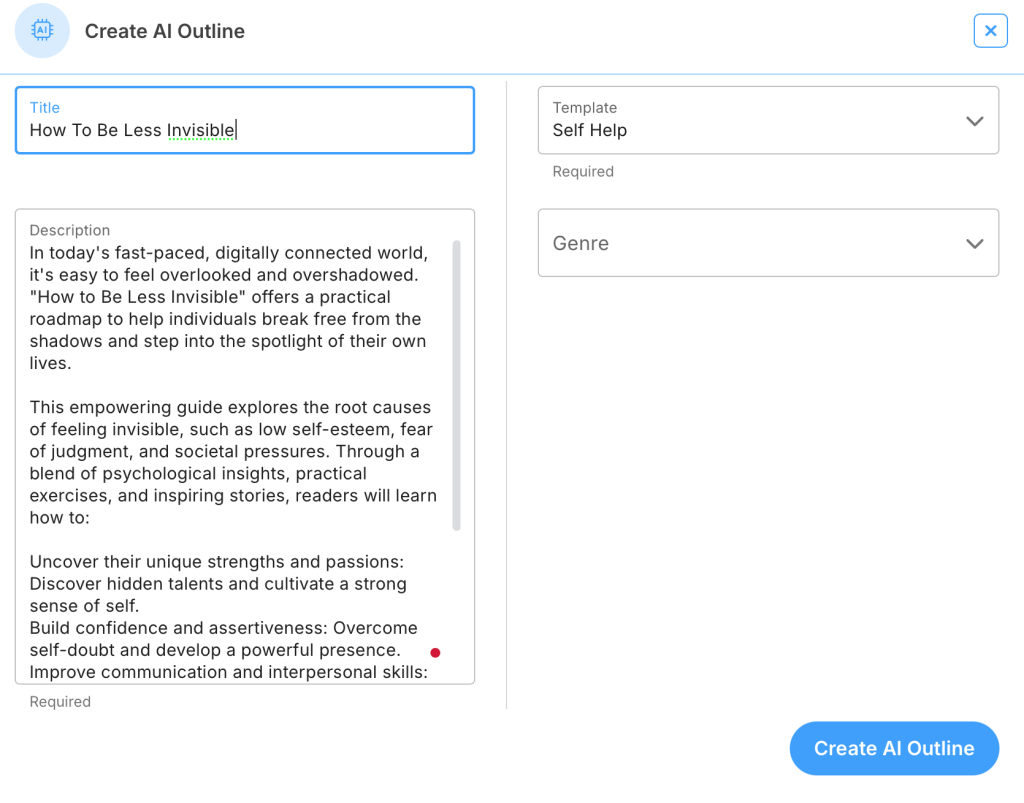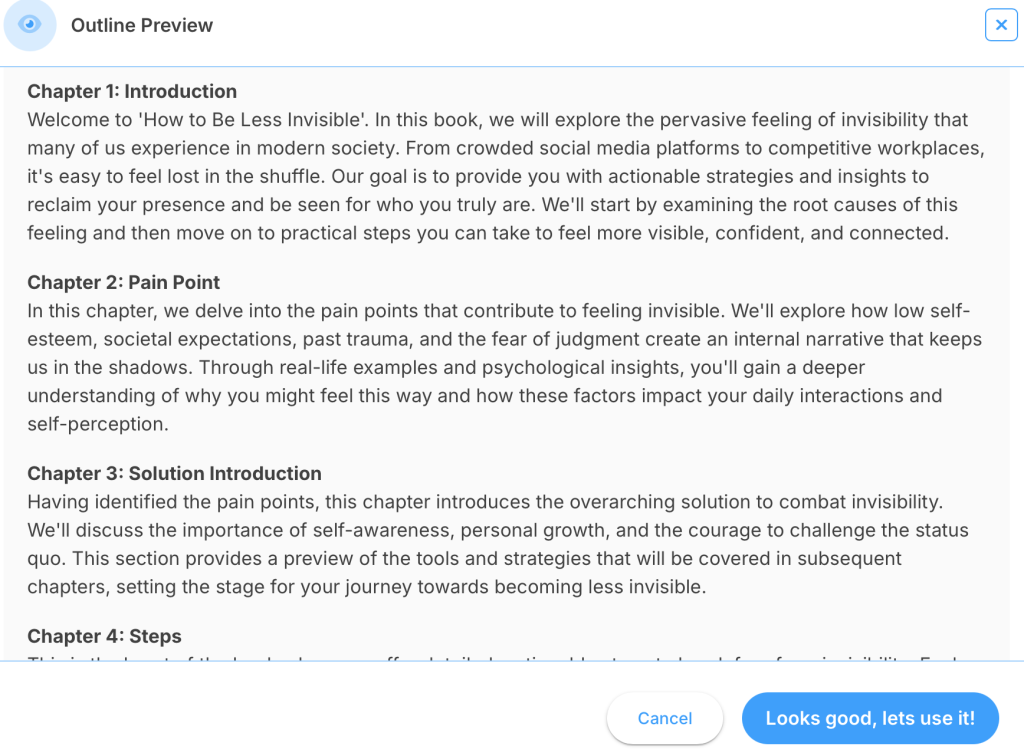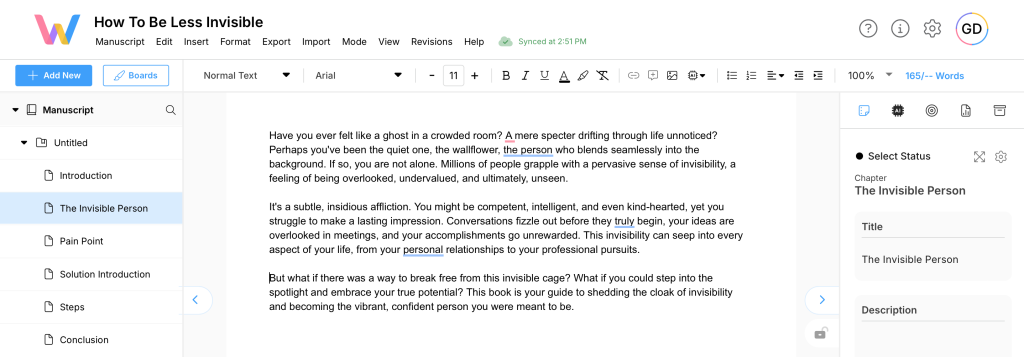NonFiction Writing Tips – Common Pitfalls To Avoid

There are very well-known pitfalls and mistakes for fiction writers: Flat characters, grammar errors, thin plots, etc., which are well covered. But what if I told you there are many common mistakes that non-fiction writers make, too? Some are logical fallacies, and others are poor stylistic choices. Today’s article aims to help you avoid these common mistakes regardless of your non-fiction genre.
In everything from Self-Help to History and Science, writers rely on “the expert voice,” overusing personal anecdotes, using “Ad Hominem” arguments, presenting only one side of an issue, and much more. Regardless of the sub-genre, you could weaken your work’s impact, credibility, and helpfulness.
Below, I’ll cover some of the issues mentioned above in greater detail, along with many more. We’ll talk about the problems, the genres they often appear in, and what you can do to avoid them and strengthen your nonfiction writing. So, without further ado, let’s get into some nonfiction writing tips and pitfalls to avoid.
Table of Contents
Common Nonfiction Mistakes And Cliches
Problems in nonfiction are unique to nonfiction. Unlike fiction, you usually provide information on a topic where you’re of some authority or attempting to convey information or ideas to your reader. That said, you need to know what you’re talking about, describe the info understandably, and provide your audience with the most helpful and complete understanding possible.
Most of what I will cover below is a common issue in one of these categories, which makes the work unreliable and defeats the purpose.
Logical Fallacies And Weak Arguments

A logical fallacy is an error in reasoning that undermines the logic of an argument. These errors can range from subtle to glaring, but they all share a common trait: they distract from the actual argument by using irrelevant information or faulty logic.
The accidental use of logical fallacies can damage the reliability of your work. Readers who identify these errors may question the reliability of the entire work. Fallacies often obscure or weaken the actual argument, too. The author diverts attention from the core issue by focusing on irrelevant points or emotional appeals.
Here are some of the most common issues I see non-fiction authors making.
The “Expert” Voice
The “expert” voice issue arises when a writer pretends or mistakenly believes they have an in-depth knowledge about a topic they might not be truly qualified in. They may use jargon or complex language to sound authoritative but lack the evidence or credentials to back up their claims.
Some examples could include, a self-help book written by someone with no formal training in psychology. A financial advice blog written by someone who hasn’t managed their own finances well or with no finance education or a historical novel where the author makes factual errors.
Here are some tips for avoiding the “expert” voice fallacy in your nonfiction writing:
- Do your research. Make sure you have a strong understanding of the topic you are writing about. This means reading books, articles, and other credible sources by experts in the field.
- Cite your sources. When you use information from other sources, cite them properly. This will show your readers that you have researched and are not just making things up. I have an article on How To Do Citations if you need.
- Be transparent about your qualifications. If you are not an expert on the topic you are writing about, be upfront about that. You can still write a valuable nonfiction piece by sharing your experiences and insights, but clarify that you are not presenting yourself as an authority.
- Use plain language. Avoid using jargon or complex language that your readers may not understand. The goal of nonfiction writing is to communicate information clearly and concisely.
Anecdotal Evidence
Anecdotal evidence relies heavily on personal experiences or isolated examples to support a claim or argument rather than on sound reasoning or sufficient evidence. While personal stories can be engaging and relatable, they often lack the breadth and depth required for drawing reliable conclusions.
For instance, a health and wellness book might claim that a specific diet is highly effective for weight loss based solely on the author’s personal experience. While your success story might be inspiring, it alone won’t provide enough information about factors such as overall health, exercise regimen, or genetic predispositions.
Without considering these variables, it’s difficult to determine whether the diet’s effectiveness can be generalized to a wider population.
To strengthen arguments, it’s crucial to complement personal anecdotes with scientific research, expert opinions, and statistical data. This approach provides a more comprehensive and reliable foundation for supporting claims.
Appeal to Emotion
When a book appeals to emotion, it relies solely on the emotional weight of something rather than logical evidence. This can be done maliciously with scare tactics or more naturally tied to the author’s opinion.
An example of the latter could be a vegan cookbook that might rely heavily on the consumption of animal products being cruel to boost the health benefits of a vegan diet. While it is true that many people choose veganism for ethical reasons, this emotional appeal could overshadow the nutritional value and culinary aspects of vegan cuisine, potentially misleading readers.
You May Also Like: How To Get A Book Published: Guide to Agents, Editors & More
Of course, you can mention strong emotional bonds to what you’re writing about, and you should. This isn’t to say they’re invalid. The problem occurs when you make a case on an emotional basis alone without other points. If you’re going for a fact-based work, be sure to have those accurate facts present.
Bandwagon Fallacy
Bandwagon Fallacy is proclaiming something is true because many people believe it. Let’s say a self-help book on personal success claimed, “Countless people worldwide have transformed their lives by waking up at 5 AM every day.” This implies that it must be effective because the habit is widespread, and so many people are doing it.
Of course, something being popular can indicate that it is effective. However, the effectiveness of waking up early can vary significantly from person to person, and without examining and providing the underlying principles or individual circumstances, claims like this are rather unsubstantiated.
Anytime you make a claim, support it with credible research. Not only does this help readers believe your claim, but it also helps them determine if it is for them personally and what causes it to work or not work.
Slippery Slope
A slippery slope argument suggests that one (usually smaller) event will lead to a chain of negative consequences. For example, in a book about technology, an author might argue that allowing the government to implement surveillance cameras in public places will inevitably lead to a total surveillance state.
“First, cameras will be in the streets, then in parks and private businesses. And who knows from there? Eventually, the government will monitor our every move, and we will lose all personal freedom and privacy.”
This argument is an example of the slippery slope fallacy because it assumes that allowing initial cameras in public places will lead to an unstoppable progression toward extreme and invasive surveillance. This uses a progression to argue against the initial action without addressing the specific merits or drawbacks of the measures themselves.
You can learn more about these logical fallacies and many more in the video – Every Logical Fallacy Explained in 11 Minutes.
Overused Phrases And Weakened Style

Like fiction writing, your writing and wording choices significantly impact how your nonfiction work reads. Specific phrases and stylistic choices can also detract from the clarity and impact of nonfiction writing.
Here are a few things to consider.
Overused Phrases
Overused phrases, such as “at the end of the day,” “needless to say,” or “all things considered,” add little value and can make your writing feel lazy and unoriginal. Instead of these worn-out expressions, aim for precise and meaningful language that directly conveys your message.
For instance, replace “at the end of the day” with “ultimately” or “in conclusion.” If you find yourself writing “needless to say,” reconsider if the information is indeed necessary or simply state the fact.
Instead of “all things considered,” summarize the specific factors you’re weighing. Regularly review your work for these typical clichés and strive to find more straightforward, impactful ways to express your ideas.
You May Also Like: Effect vs. Affect: Learn the Difference Once And For All
Here are some common ones and some suitable, more concise replacements:
| Common Phrase | Replacements |
| At the end of the day | Ultimately, In conclusion |
| Needless to say | Obviously, Having said that |
| All things considered | Overall, Considering everything |
| As a matter of fact | In fact, Actually |
| Due to the fact | Because, Since, Due to |
| In order to | To |
| It is what it is | That’s the situation, We must accept that |
| At this point in time | Now, Currently, Presently, As of now |
| First and foremost | First, Primarily, To start |
| In light of the fact that | Because, Since, That said |
Excessive Jargon
Excessive jargon can alienate readers unfamiliar with the subject matter, making your writing inaccessible. While specialized terminology is sometimes necessary, it should be balanced with clear explanations.
When introducing jargon, provide definitions or explanations to ensure all readers can follow along. For example, if you’re discussing “blockchain technology,” explain it as “a decentralized digital ledger used for recording transactions.”
Use analogies or examples to clarify complex concepts. For example, blockchain can be compared to a digital version of a public, physical ledger book that is continuously updated and verified by multiple parties. Adjust the level of jargon based on your audience—writing for experts differs from writing for a general audience.
Passive Voice
Passive voice occurs when the subject of a sentence is acted upon rather than performing the action. For example, “The ball was thrown by the pitcher” uses passive voice. While not grammatically incorrect, excessive use of passive voice can make writing indirect and less engaging. It often obscures the doer of the action, and weakens the sentence’s impact.
Active voice, on the other hand, is typically clearer, more concise, and easier to understand.
As mentioned, in passive voice, the subject of the sentence receives the action. Active voice is the opposite. For example:
- Passive: “The experiment was conducted by the researchers.”
- Active: “The researchers conducted the experiment.”
In active voice, the subject performs the action, almost always making the sentence better.
Finding Passive Voice
A good rule of thumb for checking for passive voice is to look for forms of “to be” (is, are, was, were) followed by a past participle (usually ending in—ed). If you can add “by [someone]” at the end of the sentence and it makes sense, the sentence is likely in passive voice.
Examples:
- Passive: A decision was made to implement the new policy.
- Check: A decision was made by [someone] to implement the new policy.
- Active: Management has decided to implement the new policy.
Using online tools or grammar checkers that highlight passive voice can help you identify and correct instances in your writing. Additionally, practice rewriting sentences from passive to active voice to become more comfortable with this style.
Passive voice can make writing vague and less engaging because it often obscures who is performing the action. Use active voice whenever possible to make your writing clearer and more direct.
Overly Complex Language
Using unnecessarily complex language can obscure meaning and confuse readers, making your writing less effective. Strive for clarity and simplicity without sacrificing depth. Use plain language and short, clear sentences to convey your ideas.
For instance, instead of writing, “The utilization of advanced methodologies significantly enhances the probability of success,” say, “Using advanced methods greatly increases the chances of success.” Break down complex ideas into smaller, manageable parts, explaining each part clearly before moving on to the next.
If you need to discuss a complicated topic like “quantum entanglement,” start with a basic explanation: “Quantum entanglement is when two particles become linked, so the state of one directly affects the state of the other, no matter the distance between them.”
You May Also Like: Beginner Writing Routine – 5 Effective Tips
Read your work aloud to identify areas where the language may be too complex or convoluted. If a sentence is difficult to read aloud, it likely needs to be simplified. Seek feedback from readers unfamiliar with your topic; if they struggle to understand your writing, it may be too complex.
Addressing these common issues can enhance the clarity, impact, and accessibility of your nonfiction writing, making it more engaging and effective for your readers. Clear, precise, and engaging writing not only communicates your ideas effectively but also ensures your audience remains invested in your work.
LivingWriter And Non-Fiction
LivingWriter is well-known among fiction writers and is considered the best writing app for 2024 by many. However, LivingWriter also offers the same user-friendly interface, book outlines, helpful tools, and integrated AI features to non-fiction writers.
For example, there are manuscript templates for self-help, memoirs, biography, PhD Thesis, and book proposals. Aside from generating templates to keep you on track, you can also use AI Outlines as a framework and write your unique story within.
Just add a title and a short synopsis of what the book will be about and create your outline.

Once you’ve entered your information, LivingWriter will give you a chapter-by-chapter outline of your book.

The beauty of LW AI is that it doesn’t write your story for you. Instead, it gives you a blueprint of what information should go where for your genre and applies it to your manuscript. This gives you a framework to keep you on track while leaving the creative portions for you, the writer.

Your generated outline is directly applied to your manuscript, where you can write, edit, brainstorm, create mind maps, and save research. Like the AI rewrite, story summarization, writing analysis, and book cover design features, these outlines bring out the best in you and your work without sacrificing the human element.
Conclusion
Nonfiction writing demands clarity, precision, and credibility. By avoiding typical clichés and logical fallacies, you can enhance the quality of your work and better serve your readers. Remember, the key is to present well-researched, balanced arguments and communicate your ideas in a clear, engaging manner. I hope you’ve enjoyed today’s nonfiction writing tips.